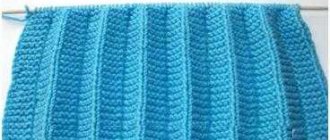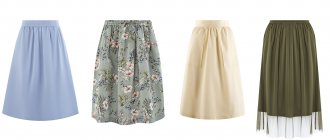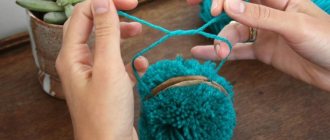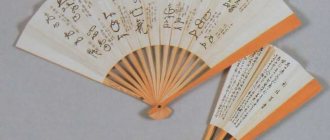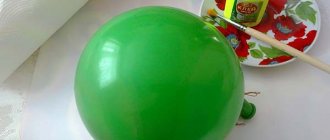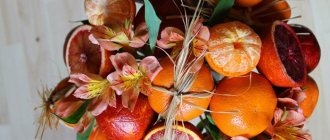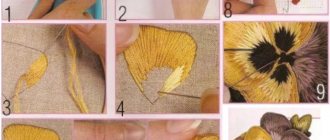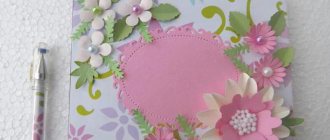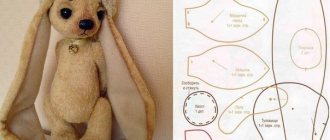What is the beauty of a half-sun skirt?
half-sun skirt model is considered one of the most common skirt models. It has many distinctive features and advantages:
- sewing it is as easy as sewing the simplest straight skirt (namely, with a straight skirt, as a rule, people begin to learn how to sew in cutting and sewing courses);
- this model is universal: it suits both little girls, adding sparkle to the image, and women and girls, giving and emphasizing elegance and femininity;
- the half-sun skirt goes well with many wardrobe items;
- this style not only visually emphasizes the waist, but also hides small flaws in the figure (but to be honest, this skirt will also hide large flaws))))
Here are a few convincing points that such a skirt is definitely needed in your wardrobe. And if you are not yet the happy owner of this feminine model, then let’s begin the process of creation itself!
See also: Skirt patterns for beginners
Before you start sewing a half-sun skirt , you need to design it and decide on the fabric. What do you want your future beautifully tailored model to look like? The skirt can be plain or with a pattern, the pattern can be small, or large elements of the pattern can be arranged asymmetrically. You can sew from light fabrics, or from dense ones - and then you will get a warm skirt for autumn or winter. It is important to understand that the same model will look completely new, made from a different fabric. The length is no less important: a short flirty skirt for a teenage girl:
A feminine half-sun skirt below the knee will add a special charm to the look:
The half-sun skirt is incredibly fashionable this season:
Or, for example, a polka dot pattern will give the model a hint of the sixties:
Light and winter skirts will look completely different:
Preparing fabric for a half-sun skirt
Once you have decided on the fabric, you will need to prepare the fabric for cutting. To do this, be sure to wash the fabric and iron it well with steam, and if you don’t do this, then the skirt may shrink from frequent ironing even while sewing, and not just when wearing and then washing the product.
Even though I have been sewing for many years, I still fall for this bait from time to time)). I started sewing this dress, and did not have time to wash the fabric, or simply forgot to do it, I already had my ideal pattern ready, made according to the pattern of the base of the dress, that is, there was no reason to doubt that the dress would not fit. But what do you think?! I didn’t fit into it after the first fitting, because from ironing the reliefs the fabric in those places had shrunk and the dress was very disappointingly not fastened at the back, I had to add additional strips of fabric in the zipper area, and as always, to be tricky..... So I didn’t I’m getting tired of writing about this: I need to decate the fabric!!!!!
So, any skirt starts with a pattern....
Instead of an afterword
Regardless of what style of clothing a girl prefers, a half-sun skirt will always have a place in her wardrobe. After all, such a model fits perfectly into the image of a romantic, gentle nature and femme fatale vamp. This can be a warm winter option, or vice versa, a detail of a beach ensemble. You just need to choose the appropriate style that matches your type of activity and age category. Cutting and sewing such a skirt with your own hands will not be difficult even for novice seamstresses who are just beginning to master the basics of this exciting activity. After all, the number of necessary parts for the product is minimal, and the sewing technology is quite simple for beginners.
Half-sun skirt pattern. Step-by-step instructions for beginners.
First of all, the pattern of a half-sun skirt is multivariate.
To make a skirt pattern, take measurements of the waist circumference, hip circumference and the length of your future product.
See also: How to take measurements for a skirt?
If you want to make a skirt with a belt, then when calculating the radius, use the measurement of the half-circumference of the waist (St), and if the skirt is with an elastic band, then to calculate the radius, take the value of the half-circumference of the hips (Sb).
We take the coefficient for calculation as 0.64; if you want to understand why this happens, read here about conical skirts. We calculate using the formula:
R=0.64(St + 1), for a skirt with elastic R=0.64(Sb +1).
How to draw the bottom line of a half-sun skirt?
From points T1 and T (radius points of the waist line) we set aside the desired length of the skirt. And we put points H1 and H. From point O, using a centimeter tape (since you are unlikely to find a compass of this size), draw a bottom line.
Now you need to correct both lines. To do this, we make the waist line and the bottom line not so convex. From point T2 we set aside 2 cm upward and place point T3. Draw a new waist line.
And from point H2 we put 3 cm up. We draw a new bottom line through point H3.
The main thing is to initially lay out the fabric correctly, taking into account the grain thread, since in the pattern of the skirt the half-sun is made directly on the fabric.
Important: if you want to get a skirt with fluffy folds along the front and back of the skirt (and this is the most beautiful option, in my opinion), then a lobe thread SHOULD NOT run through the center of the skirt (straight T3H3), we lay out the fabric so that the lobe thread (edge of the fabric) was located vertically to our drawing (ran along the straight line OH1)
You can make a skirt with two side seams, or you can fold the fabric, and then the skirt will have one side seam.
See also: How to choose a sewing machine needle based on the type of fabric?
We cut out the half-sun skirt from the fabric, taking into account the allowances, and ALWAYS hang it on clothespins, having previously stitched the waist line with a straight stitch on a machine to secure the oblique threads of the fabric to the waist line. The skirt should hang for at least 3 days. During this time, the oblique threads will pull down and form a braid, which will then need to be cut off. If you do not do this, then when wearing the product and after washing, the bottom of the skirt may turn out crooked. I described this process in detail when I sewed this dress.
We sew the skirt along the side seams, process the allowances with a zig-zag or overlock, iron them and sew on the belt. In this case, the belt will be a lobe, since the lobe thread when cutting will run along the length of the belt.
How to cut a belt for a semi-sun skirt?
To determine the length of the belt for a semi-sun skirt, take the waist circumference + two cm allowance + three cm for the fastener. And with the desired belt width of 3 cm, the cutting width = 6 cm of the belt with a fold along the top line + 2 cm for allowances = 8 cm.
Cut a strip of fabric taking into account the grain thread and glue it with an adhesive pad.
We insert a hidden zipper into the side seam.
Sew on the belt, placing it face to face to the waistline of the skirt. See more about this process in the article on how to sew a straight skirt.
Difficulties in sewing a wardrobe item
At first glance, it may seem to an inexperienced tailor that sewing a half-sun skirt is very simple. It's not like that at all. Half the success of creating such a wardrobe element depends on the quality of the material. In a fabric store, it is best to give preference to a material in which the threads are evenly woven. This fabric will behave “obediently” when cutting. If the choice fell on a material with satin weaves, then you should not be surprised at the stretching of the product. In this case, the skirt should hang a little in the closet on hangers. After a short “rest”, the product is hemmed by hand with a hidden seam.
It is also worth considering some features of a product of this type. Otherwise, the skirt will be slanted and its seams will not be even. When sewing a product for the first time, a negative experience can discourage you from sewing clothes for a long time.
The special cut will show itself precisely when all the elements are sewn together and will significantly complicate the process. It is worth paying attention that the seams of the side parts will be in different directions, while the central part of the skirt in this case will be located at an angle of 45 degrees to the side elements. This is an important drawback of the product, which was cut on the bias. Since the stitching of the side seams will not be done along a line along. But it is precisely such wardrobe elements that drape well, gathering evenly into smooth folds.
The cut of the half-sun skirt is carried out contrary to all cutting rules. The center of the part in this version has intertwined threads along the bias, and the seams on the side have transverse and longitudinal directions. One side (lobar) will not be prone to stretching, but its transverse counterpart will stretch during the stitching process. When connecting all parts of the skirt along the side seams, an inexperienced craftswoman will notice a difference of several centimeters between the sides of the product. When putting on a new thing, the central part at the front and back of the skirt will stretch, affecting the hemline.
Simple sewing tips
After making the pattern according to the required measurements and cutting the prepared material with seam allowances, you can proceed to creating the skirt.
To reduce the fit of fabric sections with different directions, you need to carefully mark the side elements before sewing on a sewing machine. During fitting, all hanging elements are cut off.
Before cutting off excess areas, you need to let the almost finished piece of clothing hang in the closet for a couple of days. The threads that were cut on the bias will take their shape by this time. After which the skirt is measured again, marking the new hem line and cutting off the hanging areas of the material.
It is better to measure the new bottom line of the product from the floor in two hands with a ruler, but you need to trim off the excess on the table.
Another tip for sewing a skirt will concern its color scheme. Namely, the product should not be sewn from striped material. The result may be a wardrobe item with an asymmetrical pattern. It would be embarrassing to wear such a skirt.
It will also be very difficult to cut a half-sun skirt from checkered fabric. Since the elements of the product will require the combination of cells throughout the entire work, and only an experienced craftsman can do this.
Many craftswomen like to create a skirt of this type from black satin materials. Unfortunately, the atlas has one unpleasant feature, namely sides with different shades. And the black color is the best possible indication of precisely this pattern.
When joining the seams of a product using a machine, the stitches will be very visible, and the areas of the material at the back and front will have a different shine. This feature of satin products is manifested not only with a half-sun skirt, but also with other wardrobe items that are cut along an oblique line. Skirts with a straight silhouette do not have such features and look good when paired with satin.
As for the belt of the product, it can be made:
- on the yoke;
- rubber band.
- not have a belt at all.
In the case of lightweight fabric, it is best to use an elastic band. The tutu, which is cut along an oblique line and has an elasticated belt, is simple to make, wears well, and is suitable not only for girls, but also for adult women.
Representatives of the fair sex who are overweight experience discomfort when wearing skirts with a rigid belt. This fact is especially applicable to girls who, due to their specialty, sit for a long time at their desk. The ideal solution to this problem would be a wardrobe item with an elastic band.
Cut out the belt along the thread along the fabric. For a belt with an elastic band, you should not select a fastener. She would be out of place here. However, such a case requires an increase in waist circumference. This will allow you not to experience any difficulties when wearing a wardrobe item of this type in the future.
The belt is sewn in one stitch, having first folded it in half. The cut edge must be processed with an overlocker.
To accurately calculate the assembly of the product, the belt is divided into four equal parts. The cut of the skirt along the top is also divided into the same number of segments. All elements are connected at the marks with pins. When sewing, it will be easy to evenly distribute the flounces of the skirt.
You can replace a fabric belt with a simple elastic element, the width of which is at least three centimeters. This type of belt is adjusted using a zigzag stitch. The upper cut of the product is pre-stitched, marking the length of the element into equal parts. Don't forget about the clasp. When making a garment that fastens with a zipper, four centimeters are added to the belt measurement. This value will allow you to create an area for sewing on a button.
When sewing a skirt for a child, the item of clothing is decorated at the bottom with frill or lace. In this case, you can play a little with the material itself: the upper part of the skirt is made of mesh or chiffon, but the bottom of the product should not be visible. The hem of the skirt can be decorated with butterflies and flowers. Fantasy in children's clothing models may have no limits.
Semi-sun skirt with elastic
An elastic waistband, of course, will be easier to make than cutting out a belt from fabric.
In addition, you won’t have to insert a hidden zipper into your skirt. But do not forget that to calculate the waist radius on the fabric, take the value Sb (half the circumference of the hips, I wrote about this above), so that the skirt will be comfortable to wear later.
So, measure the waist circumference directly with an elastic band with a slight tightening, but so as not to squeeze the belt, cut off the required length of elastic taking into account the allowances. Sew the elastic into a ring and sew it to the skirt. We iron the allowances onto the skirt and work them with a zig-zag stitch.
We also sew the bottom of the skirt with a hem or double hem seam (to hide the raw seam allowance). When calculating the pattern of a half-sun skirt and cutting it out, we put the required length on the bottom allowance (it’s better to take 4 centimeters).
How to choose fabric for a skirt?
Choosing fabric is the first step in sewing a skirt.
for and sun skirts . For a pencil skirt, you need a denser fabric: tweed, corduroy, cotton. For pleated skirts , choose lightweight fabrics: silk, viscose, satin or synthetics.
Once you have decided on the fabric, calculate its quantity.
The amount of fabric for a skirt depends on the size and height.
When calculating the fabric for a simple skirt, pay attention to the width of the fabric you buy for the product. Usually it is 1.5 m, but there are exceptions.
The modeling method is more complicated. Lay out the modeled skirt to scale. To do this, draw a skirt pattern on paper on a scale of 1:5. For a drawing on a scale of 1:5, multiply the length of the segment by 2 and divide by 10 .
So, a segment of 27 cm on paper will be equal to: 27 × 2/10 = 5.4 cm. Calculate the main shaped lines of the skirt. The width of a fabric of 1.5 m on a scale of 1:5 will be equal to: 1.5 × 2/10 = 30 cm.
Draw the main lines of the skirt on paper or cardboard. Then lay out the pattern pieces according to the width of the fabric. This way you will determine the required amount of fabric for the length of the skirt.
You will see a clear example in the video instructions:
You need to start sewing with something simple; we will look at sewing a half-sun skirt at home.
Half-sun skirt to the floor
Such a floor-length skirt will look very feminine, and to cut a skirt 1 meter long you will need 2.2 meters of fabric. In this case, the grain thread will go vertically to the left, and the fold of the fabric will go horizontally from above.
In the half-sun skirt pattern, it is also made without a fold, but, in my opinion, this is less convenient and requires more space for laying out the fabric.
We draw a pattern for a half-sun skirt directly on the fabric, cut it out, and let it hang for a couple of days on clothespins, as I already wrote above. Then we sew the side seams of the skirt, sew on the belt, and finish the bottom of the skirt with a double hem.
How to sew a half-sun skirt for girls?
Now we will look at standard sizes for girls in order to create a skirt pattern without measurements.
Our half-sun skirt for girls will consist of two skirts - an upper and a lower one. Therefore, for construction we need three radii:
- R1 - radius for the waist line
- R2 - radius for the bottom line of the upper skirt
- R3 - radius for the underskirt line
R1 - radius for the waist line:
- size 122 - 18.3 cm
- size 128 - 18.7 cm
- size 134 - 19.2 cm
- size 140 - 19.7 cm
- size 146 - 20.3 cm
R2 - radius for the bottom line of the upper skirt:
- size 122 - 53.5 cm
- size 128 - 56.5 cm
- size 134 - 60.0 cm
- size 140 - 63.5 cm
- size 146 - 66.5 cm
R3 - radius for the underskirt line:
- size 122 – 36 cm
- size 128 – 38 cm
- size 134 - 40 cm
- size 140 – 42 cm
- size 146 - 44 cm
The sewing principle is the same as we discussed above in this article. You can also add folds along the waist line; in this case, the skirt at the waist line needs to be made wider by the amount of folds being added.
For example: I want to make two counter pleats on the front and two on the back of the skirt, but since I am cutting only one half of the skirt, and then cutting it out of fabric with a fold in two layers, I need to put TWO counter pleats on the drawing. I choose the desired depth of the folds - 6 cm (3+3), which means the waist line needs to be lengthened by 12 cm. We distribute this value by 6 cm on the right and left sides of the drawing along the waist line. Draw a new line for the side seams of the skirt.
See also: Types of folds in clothes: bow, counter, one-sided
A half-sun skirt for a girl can also be decorated along the bottom line with a beautiful frill or lace, you can play with the fabric: make the upper skirt from transparent chiffon or mesh, and so that the lower skirt is not visible, you can decorate the entire hem of the skirt with flowers and butterflies. It is in children's models that you can give free rein to your imagination to the fullest!
